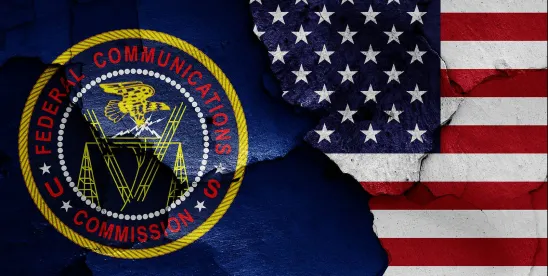Over the summer, the FCC adopted the first nationwide Next Generation 911 (“NG911”) transition rules to define the responsibilities and set deadlines for originating service providers (“OSPs”) to implement NG911 capabilities and deliver 911 calls to NG911 systems. The final rules were published in the Federal Register on September 24, 2024.
Triggering the Transition. The FCC adopted a two-phased NG911 transition scheme in which a valid request from a 911 Authority starts the transition process for each phase. A 911 Authority is considered to have submitted a valid Phase 1 request if it certifies that it has all the necessary infrastructure installed and operational to receive 911 traffic in an IP-based Session Initiation Protocol (“SIP”) format. A valid request to initiate Phase 2 requires the 911 Authority to certify that its reception of 911 traffic in SIP format complies with NG911 commonly accepted standards and that it can transmit such traffic to the Public Safety Answering Points (“PSAPs”) connected to it. In Phase 2, a 911 Authority must also certify that its Emergency Services IP Network (“ESInet”) is connected to a functioning Next Generation 911 Core Services (“NGCS”) network that can access a Location Validation Function (“LVF”) and interface with the Location Information Server (“LIS”) or its functional equivalent. As part of the transition, the 911 Authority must designate the NG911 Delivery Point locations to which the 911 Authority wants the OSPs to deliver 911 traffic. A valid request does not require all PSAPs connected to the ESInet to be NG911-ready.
Phase 1. After receiving a valid Phase 1 request, OSPs are required to (i) deliver 911 traffic bound for PSAPs in the IP-based SIP format requested, (ii) obtain and deliver 911 traffic to enable the ESInet and other NG911 network facilities to transmit 911 traffic to the PSAP, (iii) deliver 911 traffic to in-state NG911 Delivery Points designated by the 911 Authority, and (iv) complete connectivity testing to confirm that the 911 Authority receives 911 traffic in the format requested.
Phase 2. The completion of Phase 1 is a prerequisite to initiate the Phase 2 transition. Phase 2 requires OSPs to deliver 911 traffic to designated delivery points in an IP-based SIP format in accordance with NG911 commonly accepted standards, including embedding location information in the call signaling using Presence Information Data Format – Location Object (“PIDF-LO”), or its functional equivalent. OSPs must also be able to use a LIS or its functional equivalent to verify customer location information and records or acquire services that can be used to do so.
Federal Register Publication. The Final Rule establishes that, “[f]or all OSPs, the initial compliance date will be extended based on the effective date of the rules—i.e., no OSP must comply with a 911 Authority Phase 1 request sooner than one year after the effective date of these rules, regardless of the timing of the 911 Authority’s request.” The effective date of the rules is November 25, 2024; however, the FCC is not requiring compliance with the rules establishing what constitutes a valid request from a 911 Authority and the rules establishing how the NG911 requirements may be modified by mutual agreement of the 911 Authority and OSPs until a separate compliance date for those provisions has been established.
Cost Allocation. The FCC adopted default rules that require OSPs to bear the financial responsibility for transmitting and delivering 911 traffic to NG911 Delivery Points, including costs associated with completing any needed 911 traffic translation to IP-based format and the costs of delivering associated routing and location information. The default rules do not preclude alternative arrangements between 911 Authorities and OSPs at the state or local level.
Impact of Loper. Earlier this year, the Supreme Court in a 6-3 vote overturned the landmark decision in Chevron v. Natural Resources Defense Council. The case overturning this precedent is captioned Loper Bright Enterprises v. Raimondo. The deference a federal agency, like the FCC, received when a Court was reviewing a challenge to an agency’s rules took a major hit on the heels of the Loper decision. This decision could sharply limit the authority of federal agencies to implement rules that are not clearly set forth by an Act of Congress. In this instance, the FCC relied on a patchwork of statutory authority to argue that the agency had authority to adopt these rules. It will be interesting to see whether a court has a chance to weigh in on these rules and, if so, whether the rules can survive an appellate challenge.




 />i
/>i
